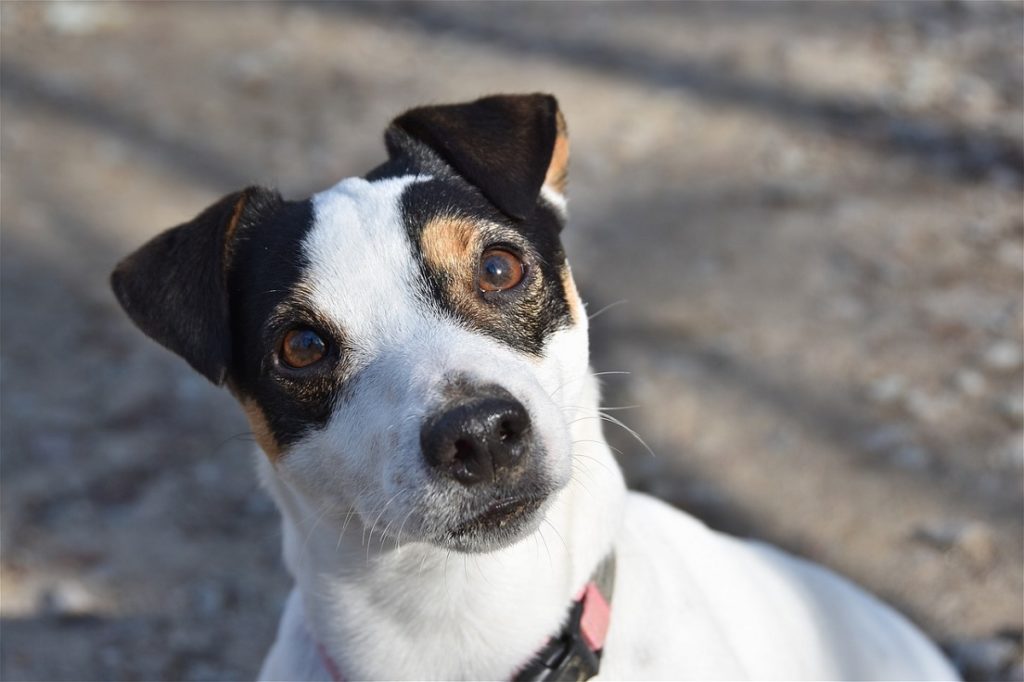Myiasis, or the infestation of maggots on dogs, is a parasitic disease that affects thousands of canines every year.
What Is Myiasis?
The infestation occurs when flies deposit their eggs in an open wound or lesion. These eggs hatch and become maggots, that then eat the dog’s dead or dying skin tissue, sometimes moving on to healthy tissue as well. The maggots remain in the wound, which prevents it from healing, and can spread throughout the skin. If left untreated, the maggots can burrow deeper into a dog’s skin and progress systemically, eating away at vital organs.
There are different types of myiasis, but the most prevalent types found in dogs are cutaneous myiasis and cavitary myiasis. Cutaneous myiasis is the infestation of maggots on a dog’s skin, or within a wound. Cavitary myiasis is less common, and it is characterized by the infestation of maggots within natural body cavities (the mouth, nostrils, ears, etc.).
Dogs who are restricted to the outdoors, have chronic canine skin conditions, festering or open wounds, or mobility impairment are more susceptible to developing the disease.
Causes of Myiasis
Pre-existing wounds, sores, and skin damage make dogs susceptible to maggot infestations. These wounds can start off as very small, and can be caused by excessive scratching or licking, an altercation with another animal, or a scratch from an object. Persistent dog skin rashes, infections, canine allergies, or consistently bad hygiene can also increase the risk of developing myiasis.
Myiasis almost always occurs in the areas of a dog’s body where he cannot reach with his tongue. When dogs are able to lick their wounds, they’re likely to heal faster, because their saliva contains tissue which promotes blood clotting. Additionally, by licking a wound where a fly has laid eggs, the tongue would remove any eggs in the infected area.
Myiasis is more common in hot and humid environments and during the warm summer months when flies are laying their eggs. Dogs who spend time in grassy areas, where there are high populations of rabbits or rodents, are also more likely to have maggots, since that’s where botflies—the most common source of the disease—thrive. However, indoor dogs can develop myiasis as well, because the larvae can be transferred from an infected dog’s fur.
Signs of Maggots on Dogs
The most obvious sign of maggots in dogs, or myiasis, is the presence of maggots on your dog’s skin, coat, or in a wound. Maggots are rarely found singularly; a female fly can lay 75 to 150 eggs at a time. You will actually be able to see the maggots wriggling and moving around. They can range in size from 1/4 inch to approximately 1 inch. You may also find eggs, or fly blow, present on your dog’s skin and coat; these are usually identified as being white, sticky and about the size of a grain of rice. Typically, eggs can only be removed by shaving your dog’s hair.
 If you find that your dog seems uneasy, constantly getting up, fidgeting, or scratching, biting, scraping, or grooming himself, check for signs of myiasis. Start with areas your dog cannot lick—center of his back, behind the ears, and his head. Also pay attention to moist areas of the skin, since maggots thrive in warm, moist places. For example, look under his tail, where urine or feces contact the skin; and between his toe joints, which may get wet from puddles or dewy grass.
If you find that your dog seems uneasy, constantly getting up, fidgeting, or scratching, biting, scraping, or grooming himself, check for signs of myiasis. Start with areas your dog cannot lick—center of his back, behind the ears, and his head. Also pay attention to moist areas of the skin, since maggots thrive in warm, moist places. For example, look under his tail, where urine or feces contact the skin; and between his toe joints, which may get wet from puddles or dewy grass.
A dog with untreated myiasis will develop a foul, decaying odor as the maggots secrete an enzyme that necrotizes, or kills off, its healthy skin tissues.
In rare circumstances, your dog may contract a cuterebra infection, which is also known as warbles. Cuterebra, or botflies, lay their eggs near or in the opening of rodent and rabbit burrows. After hatching, these larvae enter an animal’s body through an opening such as the nose, mouth, or wound. Dogs can become accidental hosts of cuterebra larvae while hunting rodents or rabbits or investigating their holes. In most cases, warbles occurs around the head or neck of dogs, but the early stages are rarely noticeable from an external inspection; it’s not until the larvae grow, which causes the skin to swell, that they are seen or felt.
Myiasis and cuterebra are both serious conditions and the removal of the maggots should be handled by a veterinary professional. If you suspect your dog has maggots, make an appointment as soon as you can to avoid them further damaging your dog’s skin tissue.
Prevention of Maggot Infestation
Although myiasis is more common in rural areas where dogs are more likely to encounter rabbits, rodents, and botflies, you should still take care to prevent an infestation from developing if you live in a large city too. Start by strictly following your dog’s deworming and vaccination schedule given to you by your vet.
Also take the time to inspect your dog’s skin and coat every day to ensure he doesn’t have any open cuts or wounds on his body. If you do find any wounds, wash them and apply topical antiseptics.
Maintaining a good hygiene also helps with preventing myiasis. Brush and bathe your dog regularly and thoroughly wash any urine or feces should be thoroughly washed off your dog’s coat daily. Doing so will help you notice any potentially threatening underlying skin problems is areas that are more susceptible to myiasis.
Because older and less mobile dogs are at a higher risk of developing a maggot infestation, it is important to limit their time outdoors. Keep them inside as much as possible and make sure to check their coats frequently.
It is also very important to go to the veterinarian as soon as you notice any skin infections or any of the signs of myiasis mentioned above.
Symptoms of Maggots in Dogs
Because there are different types of myiasis, symptoms can vary. The longer myiasis goes undiagnosed, the more severe the symptoms become.
Dogs may present different reactions to maggots but generally, symptoms of myiasis include:
- Depression
- Diarrhea
- Discomfort
- Edema
- Excessive licking
- Fever
- Intense itching
- Lack of appetite
- Lethargy
- Pain
- Twitching
In severe cases, myiasis can progress systemically and infect different organs, causing a wider range of more serious symptoms. If maggots penetrate deeper into the dermis layer, it can lead to dangerous infections, and in some cases, even shock.
Treatment of Myiasis
Myiasis is a serious condition and the treatment of it should be handled by a veterinary professional.
 The primary treatment of myiasis is the physical removal of the maggots and their eggs, one by one. This process is usually done carefully, by hand and is a delicate procedure. The enzymes and toxins that maggots use to necrotize and eat an animal’s flesh can be released in larger quantities if the body is crushed or pulled apart. If they’re released into your dog’s bloodstream in large enough quantities, those enzymes can cause additional tissue death and possibly shock.
The primary treatment of myiasis is the physical removal of the maggots and their eggs, one by one. This process is usually done carefully, by hand and is a delicate procedure. The enzymes and toxins that maggots use to necrotize and eat an animal’s flesh can be released in larger quantities if the body is crushed or pulled apart. If they’re released into your dog’s bloodstream in large enough quantities, those enzymes can cause additional tissue death and possibly shock.
Because of both the delicacy of the procedure and to avoid any discomfort for your dog, treatment for myiasis is usually done under general anesthesia. Some types of myiasis, such as a cuterebra infestation, require surgical removal of the maggots.
The first step in treating maggots in dogs is typically cleaning and disinfecting the area with an antiseptic. However, some vets will choose to perform the extraction first, and clean the wound after the procedure.
Removal of the maggots is a laborious and time-consuming process. If the infestation is severe, you might need to make several visits to the vet to repeat the process and ensure every maggot, larva, and egg are removed.
The skin tissue that has been damaged and necrotized by the maggots will also need to be removed in order to promote healing.
Once the procedure is complete, your vet will shave the affected area to prevent bacteria or eggs from remaining on your dog’s skin and coat. They will also apply a topical, antiseptic solution. They’ll then bandage the affected area to keep it clean and allow it to heal without any interference.
In some cases, your vet may prescribe several weeks of oral antibiotics, antifungals, fluid therapy, or other measures to help your dog fully heal.
After the treatment of myiasis, the underlying infection or skin problem that led to the maggot infestation should also be identified and treated.
Recovering from Maggot Removal Treatment
Wounds that are related to myiasis can take a long time and a lot of attention to heal properly, especially if the maggots penetrated deeper layers of the skin.
More than one appointment may be required to ensure that all maggots have all been removed. Your vet will also check to ensure that skin is regenerating properly and no other infection begins to develop. It is essential that you complete the full dosage of any medications that are prescribed by your vet and consistently clean and dress the wound until it is completely healed.
While your dog is recovering, your vet may also prescribe medication to help with the pain and discomfort, depending on the symptoms your dog presents.
Foods that Promote Healing and Recovery
What your dog eats after his myiasis treatment can have a great effect on how well he recovers. A poor diet can slow his healing. While it’s important to follow any recommendations given to you by your vet, a proper recovery plan should include healthy foods that promote healing.
It’s likely that your dog won’t have much of an appetite coming off the anesthesia, especially if he lacked an appetite before going into treatment. Start off by offering him small, nutritious meals. If you don’t know which food is right for your pup, ask your vet for a dog nutrition checklist or recommendations.
You may want to ask your vet for recovery diet recommendations, but typically, a post-surgery or post-trauma recovery diet for dogs will have increased calories, proteins, and fats. This way, even if your dog eats a smaller portion, he will still be getting all the nutrition he needs to heal.
 When you’re choosing what to feed your dog, look for food items that are high in protein, this will help him maintain his body mass. Avoid foods or treats that are high in carbohydrates, since dogs who are in recovery are typically insulin resistant to some degree. You also want to provide your dog with food that is a rich energy source, since lethargy in dogs is quite common after a medical treatment.
When you’re choosing what to feed your dog, look for food items that are high in protein, this will help him maintain his body mass. Avoid foods or treats that are high in carbohydrates, since dogs who are in recovery are typically insulin resistant to some degree. You also want to provide your dog with food that is a rich energy source, since lethargy in dogs is quite common after a medical treatment.
Finally, you want your dog’s recovery diet to include foods that are easily digestible as well as tasty! If you’re making it easier and more enjoyable for him to eat, your dog will absorb more of the ingredients needed to recuperate.
Here are some examples of all-natural foods you can give your dogs while they’re healing from treatment:
- Carrots – these are high in the restorative vitamins A and C
How to serve: Boil and mash them so they’re easier for your dog to chew and digest.
- Sweet potatoes – like carrots, this vegetable contains vitamins A and C
How to serve: Cut them into cubes and boil them until they’re tender, then mash, sprinkle with a bit of cinnamon and serve it to your dog.
- Bell peppers – these are rich in vitamin A, C, and E, and also contain helpful antioxidants, which protect cells from free radicals and other toxins
- How to serve: Remove the seeds then puree or cook the pepper so it’s easier to digest. Once your dog is feeling better, you can even give him raw slices, he might enjoy the crunchy texture.
- Blueberries – blueberries are considered a superfood for a reason, they’re full of antioxidants and minerals that allow the body to focus on healing
How to serve: Your dog can eat these as-is, however if you’re finding he’s a little apprehensive, you can turn it into an ice cream treat by pureeing them along with a frozen banana
As a pet owner, your job is to give your dog the best life possible. While maggots in dogs is fairly uncommon, its symptoms can be devastating; make sure you’re taking care of your dog and taking him to the vet at the first sign of myiasis.
Sources:
- “Myiasis (Maggots) in Pets.” Pet Health Network, www.pethealthnetwork.com/dog-health/dog-diseases-conditions-a-z/myiasis-maggots-pets.
- “What Are the Treatments for Maggots in Dogs?” Cuteness, www.cuteness.com/article/treatments-maggots-dogs.
- “Botflies (Maggots) in Dogs.” PetMD, www.petmd.com/dog/conditions/infectious-parasitic/c_multi_cuterebrosis.




